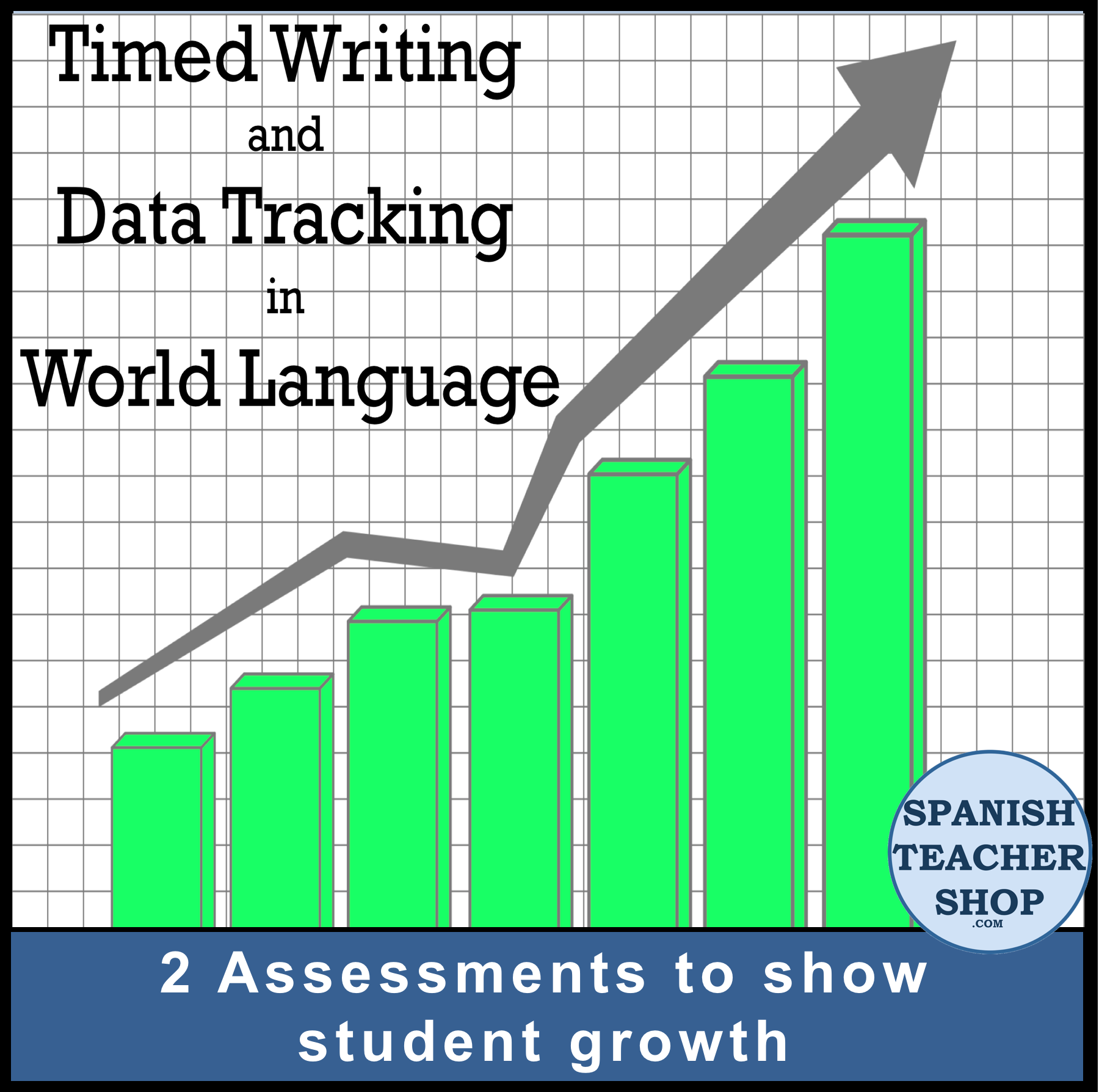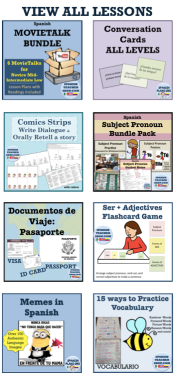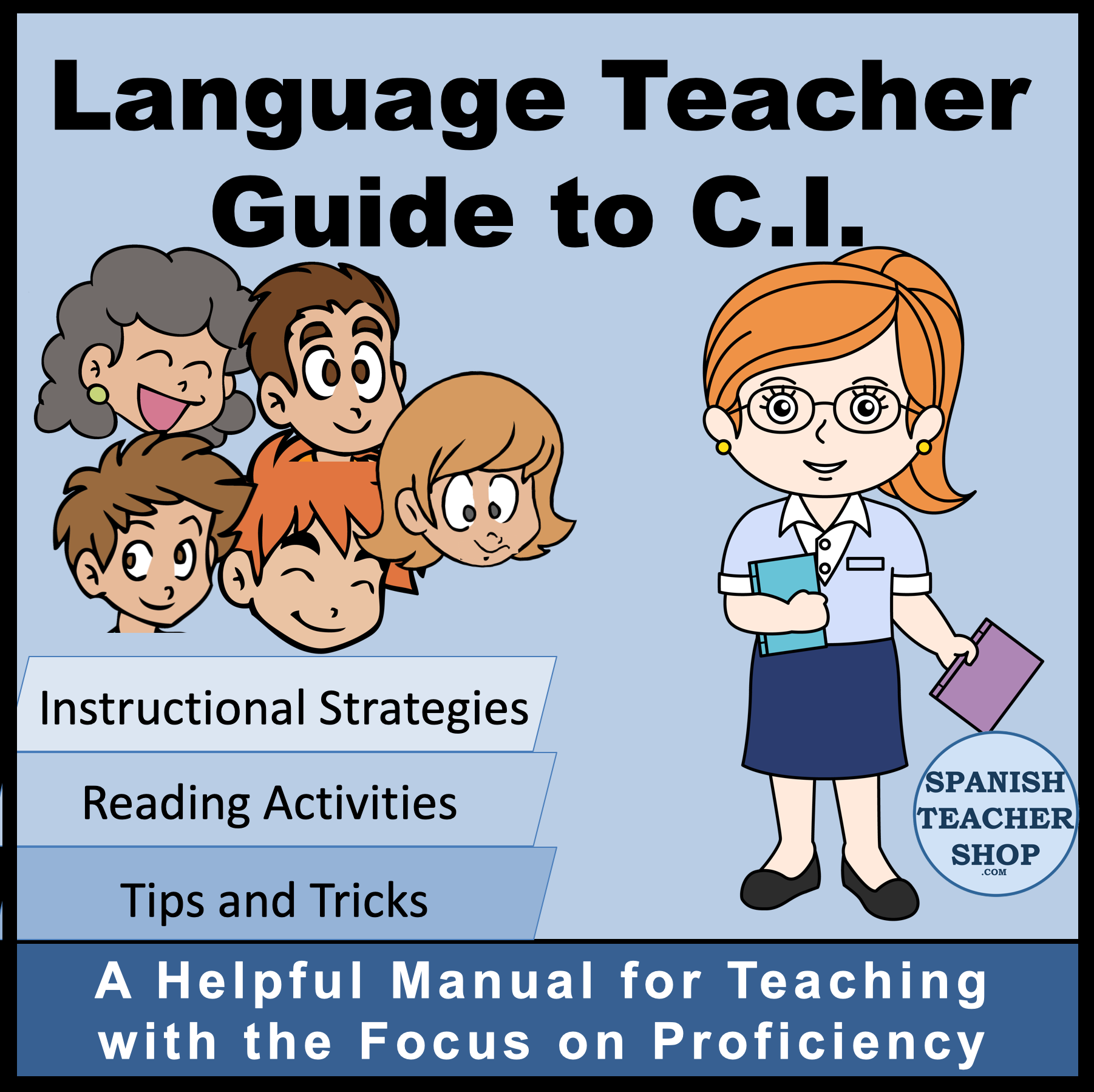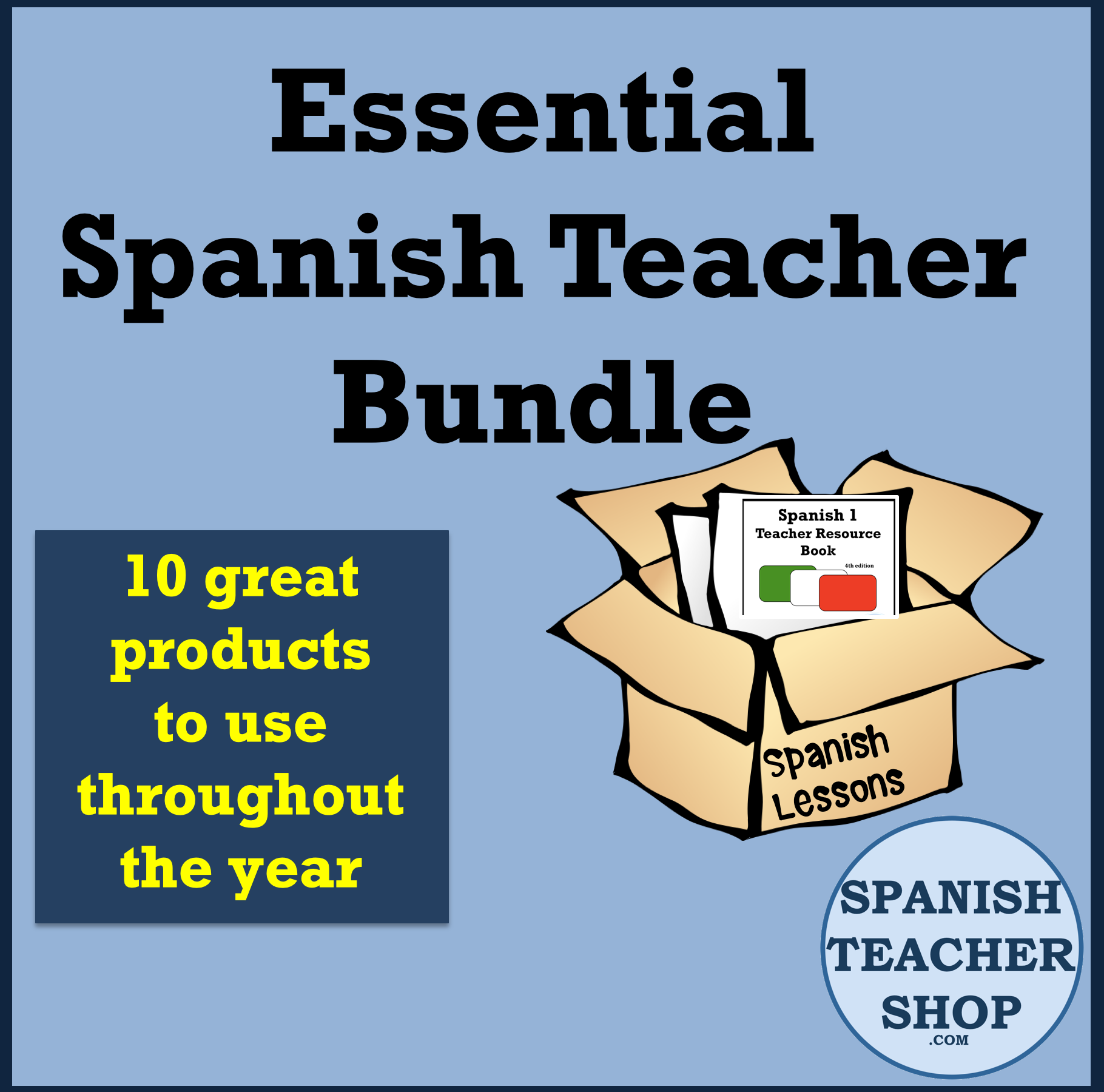If you haven’t seen our latest video on YouTube, we walk you through a 3-day lesson on using a story. You can watch it below and follow our YouTube channel. If you find any videos helpful, please click on the like button and share them on your social media:
Here’s what you’ll learn:
We talk about using The Storytelling Corner’s product El Vampiro. Even though her stories are created with elementary students in mind, the simple language and visual illustrations are perfect for any novice (level 1) class. I’ve actually even taken a few of her stories and printed them for my FVR library.
Day 1:
Using student actors we told a story as a class. We did a parallel story to El Vampire, changing the problem from he ran out of books to read to he didn’t have chicken to make soup. During the class story, I could use and recycle phrases that we had been using in our class and recycle vocabulary/phrases from our previous stories.
Synopsis: A vampire liked to cook but didn’t have chicken, so he needed to go to the supermarket. He couldn’t go out at night because the sun causes him problems. At night, he flies to the supermarket but it is closed. The worker says that another store is open 24 hours. He goes to that store. That store was open but they didn’t have chicken. (If time, he goes to a third store that is open and has chicken but doesn’t allow him to enter with his pet bat).
Day 2:
I typed up the story from Day 1 and passed out the text to the class. On this particular day, I read a sentence in Spanish and called on a student to translate. You could also have students do a “volleyball read” where student A reads a sentence in Spanish and student B translates that sentence to English and then continues the next sentence in Spanish and so-on.
Tip: Add in extra details or new words to the text. Try adding in connecting words so they become more familiar with words and structures that they can use to “level-up” their proficiency. Make sure to have students write the translation of these unknown/new words.
Day 3:
I printed out the original storyboard from my purchase of El Vampiro. If you are using a different story, you can create your own scenes on storyboardthat.com (Here’s a sample of how I used this site to create scenes for a chapter of a novel) or otherwise sketch out some scenes. This storyboard already included captions so all students had to do (in partners) was to read each scene and put the story in order.
I walked around checking in on groups and pulled out any cards they had in the wrong order so they to try again. As the whole class finished, I read the caption in English so students could check their answers.

What types of different activities do you do within a story unit? What are your favorite types of activities to do with stories? Tell us in the comments….











I have yet to do a full class story, but I wish to in the future! I am looking for ways to carry it out since I do not have class sets of any books, but rather single copies of books in my library.
I really liked the use of the StoryboardThat! app. I need a way to visually represent multiple scenes from our class stories without having the classroom artist be responsible for it. Thanks for the tip!
I love SpanishPlans.org. There are always great ideas to use in my high school Spanish classes. Thank you so much for offering this giveaway! It will be a boost until the end of the semester if I win the novels. 🙂
I love SpanishPlans.org. I love the great ideas that I can incorporate into my Spanish classroom. Thank you for your generosity!! Hoping to win the novels and grow my library of books.
Thank you for your ideas! They’re great! Looking forward to new novels.
Sounds like fun!
This is a really cool idea! Thanks for sharing!
I’ve been using storytelling for four years now, and I’m always looking for new ideas.
1. I just found a new activity called “Scrambled Sentences”. Teacher prep: Choose sentences from a story. Write each word from a sentence on a separate index card (I cut my cards into thirds) and clip the sentence pack together. For the sentence “El puma camina en secreto en la selva”, I used six cards as I put “el puma” together on one card and “la selva” together on another card. Activity: Divide students into groups. Each group takes a sentence pack and unscrambles the words into the logical syntax. The group then records their sentence onto a sheet of paper and then illustrates the sentence to show comprehension. They then scramble the cards, clip them together, and return them to pick up a new pack. For my class of 33, I created 17 sentences and had 11 groups. Each group was required to do three sentences per day this week, and tomorrow, I’ll reveal the sentences for students to check within their groups. Lots of great collaboration, conversation, and thinking went on with this activity!
2. I love to do scavenger hunts in reading. First, students choose two sentences from the reading passage/chapter, illustrate them, and then write the sentence on the back of each. Then, I put their illustrations into a Google slideshow. When playing the game, students are put into groups, and each student has a copy of the reading passage or the book. Each group has one whiteboard, marker, and eraser. I project the first illustration, and each group has to search the reading to find the “sentence” caption for the illustration. They have to copy it onto their whiteboards (I make them use punctuation, capital letters, etc.), and then they have to show them to me. If they are correct, they earn a team point. Sometimes, I also give bonus points to the first team to show me their board. Students in each group take turns writing. They love to see drawings (their own and their classmates’), and sometimes, the ‘less-than-museum-quality’ ones are very fun for them to see and figure out!
Awesome ideas!! Thanks for sharing!!!
Great ideas! Thank you!
I’ve used storyboard that combined with Google slides to illustrate the story, then record it with screencastify while narrating it. And then that video into an Edpuzzle! Lots of work, but with it too have kids hear story over while answering questions!
I am always looking for new ways to present stories but then re-telling or going over the story in novel ways that provide the appropriate amount of input. I feel that there are great ideas here and I can’t wait to try them!
Your storytelling lesson is an inspiration. Bonus — comments from other readers. Thanks for sharing ideas.
This is very useful as a coworker and I just went to TPRS training. Thanks for hosting this giveaway!
As a Spanish teacher returning to the classroom at the ripe age of 51, I’m finding so much has changed…for the better. Yea, CI, TPRS, OWL and all methods to help our students get tons of meaningful input. Your site has helped me a ton.
I love how story creation contributes to class culture. One of my favorite parts of teaching with CI is how we focus on having everyone participate, and stories form the backbone of this. I’ve got a kid in my class who is failing everything but Spanish. The other teachers were asking what I do, I said, well, we created a story with this kid wherein he got to go to a haunted house and steal a knife from the clowns. Hard to do in physics.
So fun! Cannot wait to try this with my students! They love storytelling and various manipulative comprehension activities!
This learning segment has excellent scaffolding! This definitely lends itself as a base for student generated story compositions in the presentational and interpersonal modes of communicaiton. Excellent lesson plan!
So helpful to beginners in comprehensible input to have detailed plans like this. So helpful to those who have done CI for a while to have a new, interesting story to use. Thank you for this resource.
Looking to incorporate more of this into my Middle school Spanish classes. Thank you for the great ideas!
I love to have story actors but I also like to switch up different ways to read. The kids get so bored with normal reading so ANY WAY to spice that up makes me happy.
I love having students create storyboards to review storylines and main ideas of a story or book!
I’ve been trying to reinvent my classroom and teaching, using more CI. Love novels and Movie Talk
Great Ideas, I can’t wait to implement them!
Thank you for sharing!